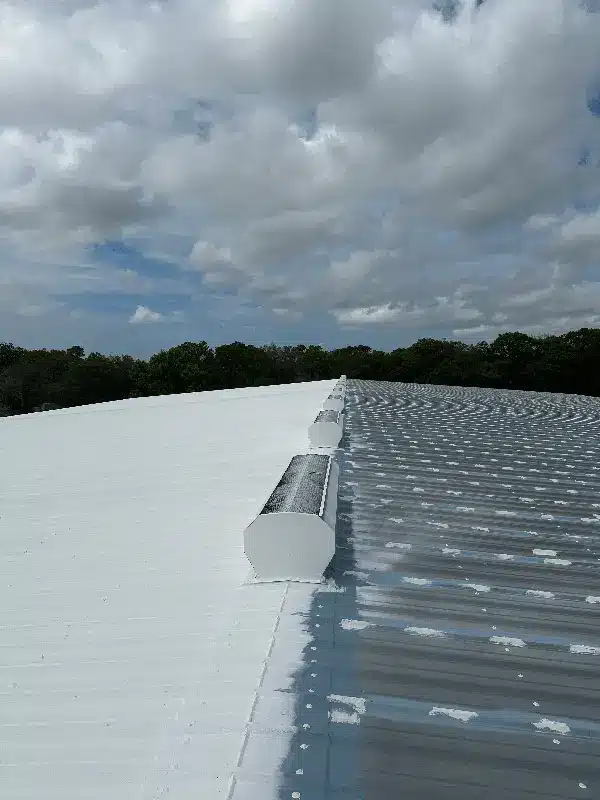
Following are some of the top options for roofing on commercial ranches:
Using metal roofing for your commercial ranch buildings is a popular choice, particularly in high wind areas, as they are highly durable and can withstand high winds. If you have older metal roofs, they can also be easily restored through a straight-forward metal roofing restoration process. Here are are a few reasons why metal roofing is a top choice:
Asphalt shingles offer a cost-effective and aesthetically versatile option for many ranch roof styles, especially if you have a big project. For instance, if you are sourcing both farm shed roofing materials and suitable ones for a farmhouse, they can be customized to suit the style of each building. Asphalt shingles are not ideal for areas with harsh climates however. Here is a summary of the pros and cons of asphalt shingles:
If you’re looking for a more rustic farm roof style, clay or concrete tiles can provide that classic look and are also very durable. Here are are few other factors to consider:
Composite shingles can mimic the look of more costly materials like wood shakes and also last longer than asphalt shingles. They are a good compromise between an economical option and a premium material. Following is a summary of their pros and cons:
If a sustainable farm is your top priority then green/vegetative roofing is the way to go. Here are a few pros and cons to consider:
For most commercial ranches, metal roofing offers the best combination of durability, weather resistance, and low maintenance. However, the specific needs of the ranch and local climate conditions will guide the ultimate choice.
Once you’ve picked the type of roof or combination of roof materials for your ranch or farm, commercial roof maintenance and regular inspections will help keep long-term costs down. Here are some key tips for keeping your ranch roofing in good shape:
Inspect your roof at least twice a year (spring and fall) and after major storms. Check for missing or damaged shingles, signs of water damage, leaks, mold, or debris buildup. Also, inspect for cracks in the flashing around chimneys, skylights, and vents.
Clogged gutters can cause water to pool on the roof, leading to leaks and structural damage so be sure to clean them out at least twice a year or more if you have a lot of trees surrounding the building.
Branches can scrape and damage shingles, and falling leaves or debris can clog gutters or rot shingles. Keep branches at least 10 feet away from the roof to reduce the risk of damage.
If you notice any cracked, curled, or missing shingles, replace them immediately to prevent leaks and water damage. Ensure the replacement shingles match the existing ones in both material and quality.
Moss can hold moisture, leading to roof rot, and algae can discolor and weaken the shingles. Use a moss killer or roof cleaning solution to remove growth and prevent future problems.
Adequate attic ventilation prevents moisture buildup, which can lead to mold, ice dams, and structural issues so ensure vents are unobstructed and in good working order.
Flashing around chimneys, skylights, and vents can develop cracks over time. Reseal the flashing and caulk around any exposed joints to keep water out.
These parts of the roof are prone to water damage, especially if gutters are clogged. Repair any cracks, rot, or peeling paint promptly to prevent further damage.
Proper insulation can prevent ice dams in winter, which can cause leaks and shingle damage. Check that your attic insulation is evenly distributed and sufficient to regulate the roof’s temperature.
Ice dams can form when heat escapes through the roof, causing snow to melt and refreeze at the edges. Make sure you insulate and ventilate your attic properly and use heated cables along the edges of your roof if necessary.
By choosing the right materials that are suitable to your farm business or commercial ranch needs, and following these maintenance tips, you’ll be equipping yourself for the lowest maintenance possible and highly durable roofing that will ideally meet your branding and aesthetic purposes also. And remember, if you see anything concerning during your bi-yearly inspections, contact Contact Troyer Commercial Roofing for a free professional ranch roof inspection.